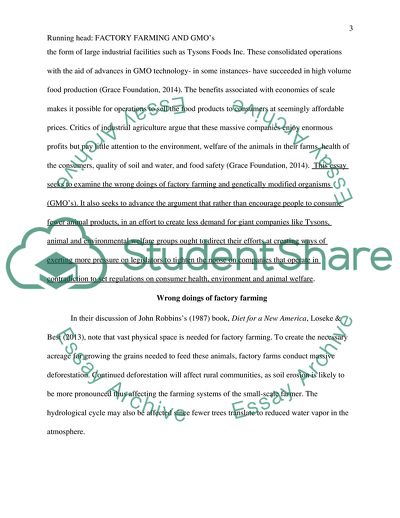Cite this document
(Factory Farming and GMOs in the United States Coursework Example | Topics and Well Written Essays - 1500 words, n.d.)
Factory Farming and GMOs in the United States Coursework Example | Topics and Well Written Essays - 1500 words. https://studentshare.org/environmental-studies/1820961-factory-farming-and-gmos-in-the-united-states
Factory Farming and GMOs in the United States Coursework Example | Topics and Well Written Essays - 1500 words. https://studentshare.org/environmental-studies/1820961-factory-farming-and-gmos-in-the-united-states
(Factory Farming and GMOs in the United States Coursework Example | Topics and Well Written Essays - 1500 Words)
Factory Farming and GMOs in the United States Coursework Example | Topics and Well Written Essays - 1500 Words. https://studentshare.org/environmental-studies/1820961-factory-farming-and-gmos-in-the-united-states.
Factory Farming and GMOs in the United States Coursework Example | Topics and Well Written Essays - 1500 Words. https://studentshare.org/environmental-studies/1820961-factory-farming-and-gmos-in-the-united-states.
“Factory Farming and GMOs in the United States Coursework Example | Topics and Well Written Essays - 1500 Words”. https://studentshare.org/environmental-studies/1820961-factory-farming-and-gmos-in-the-united-states.


